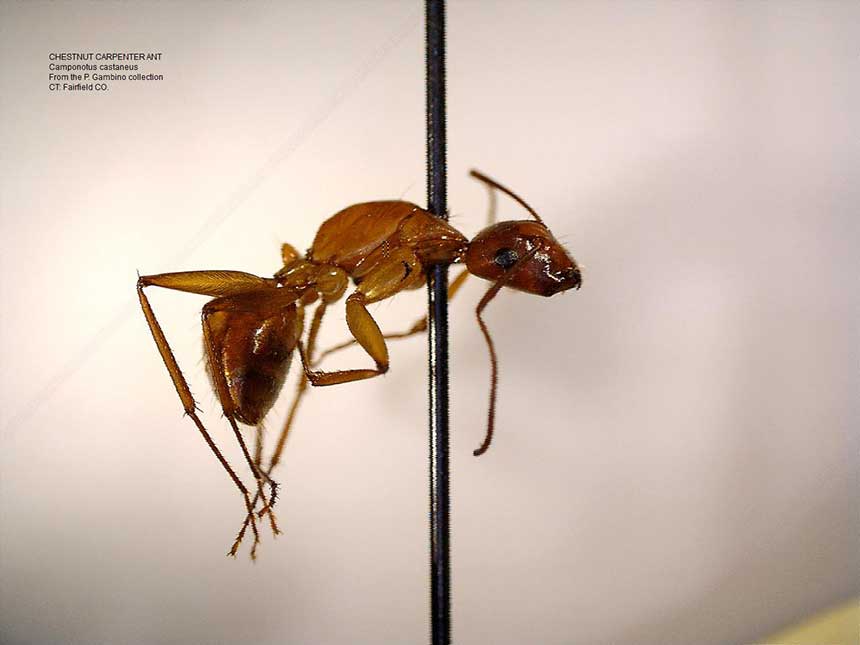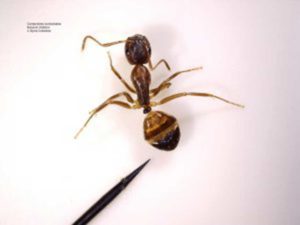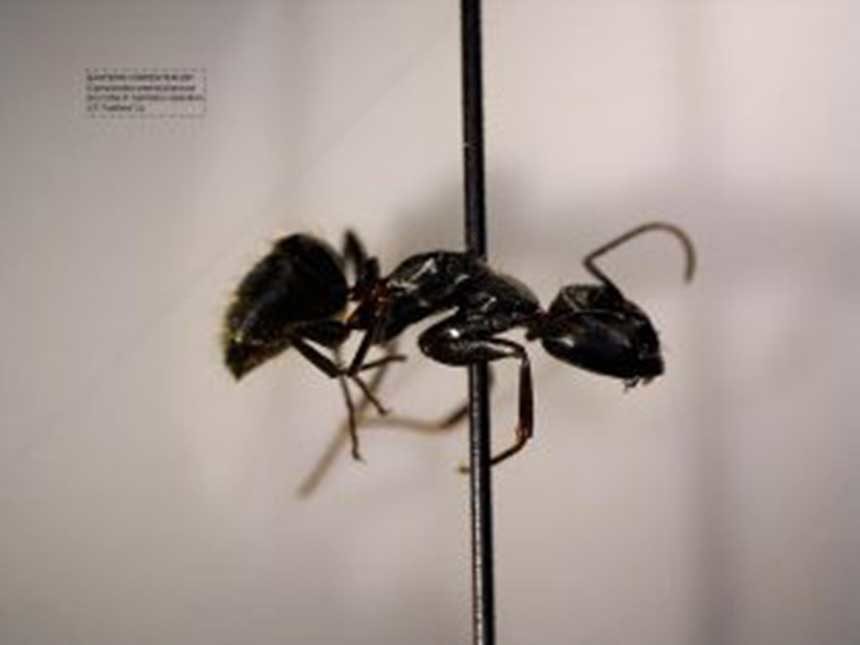Editor’s note: We would like to introduce you to our newest blogpost series- Natural Selections of Van Cortlandt Park. This series will focus on the creatures that call Van Cortlandt Park home. With well over half of its 1,146 acres being comprised of natural habitats- forests, wetlands, a lake and meadows- many plants and animals live in or rely on Van Cortlandt Park. Each post in Natural Selections will highlight and introduce you to one or a family of those creatures. During this first post, Alex Byrne will introduce you all to some of the Carpenter Ants in our beloved park.
Meet the Carpenter Ant
by Alex Byrne
Odds are if you are walking down the sidewalk next to Van Cortlandt Park, or along a forest trail in the Park and see a caravan of large black ants, you have just been acquainted with one of the most functionally important groups of insects within the park; carpenter ants. Carpenter ants within the genus Camponotus consist of 1,489 species world wide, with the most Camponotus rich continents being South America and Australia (Bolton 2012). In New York City and across the world, carpenter ants form large colonies inside dying and dead standing trees, hollowed out branches, soil and even human dwellings and utilities where they can induce millions of dollars of damage in some situations (Ellison et al 2012). In urban forest ecosystems such as Van Cortlandt Park, carpenter ants are key players in the production and turnover of soil.
Have you ever seen a large hole at the base of a tree in Van Cortlandt Park? That hole at the bottom of the tree with saw dust seemingly piled up right up front is a product of the activity of carpenter ants. Carpenter ants assist the initiation of the decomposition cycle for many dying or dead standing trees, which in turn provides a nutrient matrix for developing plants and soil microbes. In addition, carpenter ant nests provide a food source for multiple species of insectivorous birds such as woodpeckers. Carpenter ants are also long-distance foragers with a varied diet that contribute to a large waste removal service within our park. It is not so far fetched to think that without carpenter ants we would be knee high in fly and moth exoskeletons walking down the John Muir trail (Ellison et al 2012).
During the summer of 2017, ants were surveyed throughout Van Cortlandt Park by the FVCP environmental educator and American Museum of Natural History Field associates and Volunteers in the Department of Invertebrate Zoology. A variety of methods including pitfall traps (Cups placed flush with the ground intended to catch those insects walking along the ground), baits (50 ml tubes with cotton balls soaked in a variety of nutrients) and hand collecting by flipping over rocks and logs were employed to capture the best representation of the whole ant community. This work revealed possibly the most diverse assemblage of carpenter ants yet discovered in an urban park within New York City. In total, five different species of carpenter ants alone have been found thus far in Van Cortlandt Park by the researchers, with more species suspected to still be walking around. Urban environments are biological unknowns despite the dependency of humans to urban centers. Here is an opportunity to become acquainted with three of the lumber jacks of our forest, meet the carpenter ants of Van Cortlandt Park:
- Camponotus pennsylvanicus: The Eastern Carpenter ant (pictured above) creates nests in rotting wood that can contain 15,000 individual ants. Let’s do a simple thought experiment. Imagine that there is one C. pennsylavanicus nest for every acre within Van Cortlandt Park (a low range estimate). That is equal to around 1,446 C. pennsylanicus nests within the park. A simple extrapolation suggests that at minimum there are 17,190,000 individual C. pennsylvanicus that make VCP their home. Based on 2017 survey work, this number at its highest range could reach 171,900,000 individuals. From a biomass point of view, if we were to weigh all the individuals within just one species of Carpenter ant within the park that bag would weigh 1,894 pounds approximately (0.005g/ant). This demonstrates a fundamental aspect of the potential role carpenter ants play within our forests when one considers such a large biomass. Within Van Cortlandt, C. pennsylanicus is found in most habitats with some canopy cover across the park.

- Camponotus castaneus: The Chestnut Carpenter ant (pictured to the right) is seldom seen in the park, yet it is very abundant and is a large player in the soil aeration game. A mostly nocturnal forager, VCP is the only place in NYC where C. castaneus has been documented (according to the recent literature) where it occupies both primary and secondary forest and open woody meadows. Large colonies can be observed by lifting large flat stones that sit in well-lit forest areas both in Vault Hill and the North West Forest. Look carefully at the individuals and you will observe a morphological characteristic present in all carpenter ants. The colony is composed of three different cast members, differentiated by the size of their bodies and heads. Minor and major workers have relatively small rounded heads and do most of the foraging and provisioning of the young for the colony. The larger bodied solider cast is composed of ants with large angular heads that protect the colony from predators and other invading ants.

- Camponotus subbarbatus: The first time I saw this species (pictured to the right) in the park, I was sitting in the middle of a large phragmites patch adjacent to the Parade Grounds and an inflow pipe which discharges into the lake. I had become convinced that the tube-like structure of the phragmites shoots concealed rare species of ants and insects that most people were missing because they simply were not looking inside the phragmites. No luck. Some generalist foragers, but nothing to exclaim “eureka!” over. Looking at the ground and having spent the last hour cracking things open and peering inside, I picked up a branch no thicker than my forearm and broke it in half. Instantly ants began pouring out of a perfectly round hole in the center of the branch and onto my hands, where they greeted me with mandibles. The abdomen (gaster in ant talk) of C. subbarbatus looks like no other gaster in the park (you can see in the picture the purple striping on the gaster). I instantly knew I had found something new and interesting to my collection and possibly the park. According to a catalogue of New England ants (we simply do not have a New York state ant list!), C. subbarbatus has never been collected in New England with few accounts scattered across the Hudson Valley and Long Island. Our record of C. subbarbatus is likely the first record in New York City. Setting itself apart from other Carpenter ants, C. subbarbatus can also be found in wetland habitat such as those areas dominated by phragmites and jewel weed. When in search of C. subbarbatus, look on plants off the ground and their flowers.


